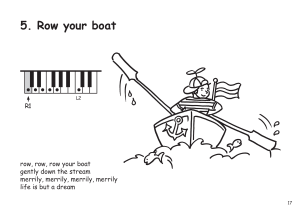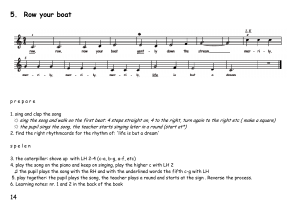Handy Hands
Handy Hands is an auditory piano method for 5- to 8-year old children. The method is based on songs. Children sing a song and do movement tasks while singing. Then they learn to play the song on the piano. There are two lesson books, the second book also includes 40 exercises for reading music notes. The recently published Micebook has extra songs and fantasy tasks. Because of the creative and playful approach, the Handy Hands piano method is an attractive start for every young child.
In October 2015 Erna Fransen and Mieke de Jong gave a Pecha Kucha lecture about the Handy Hands books. This took place during the International Conference of the EPTA in Amsterdam. Underneath you can find this lecture. It will give you a good impression of our method!
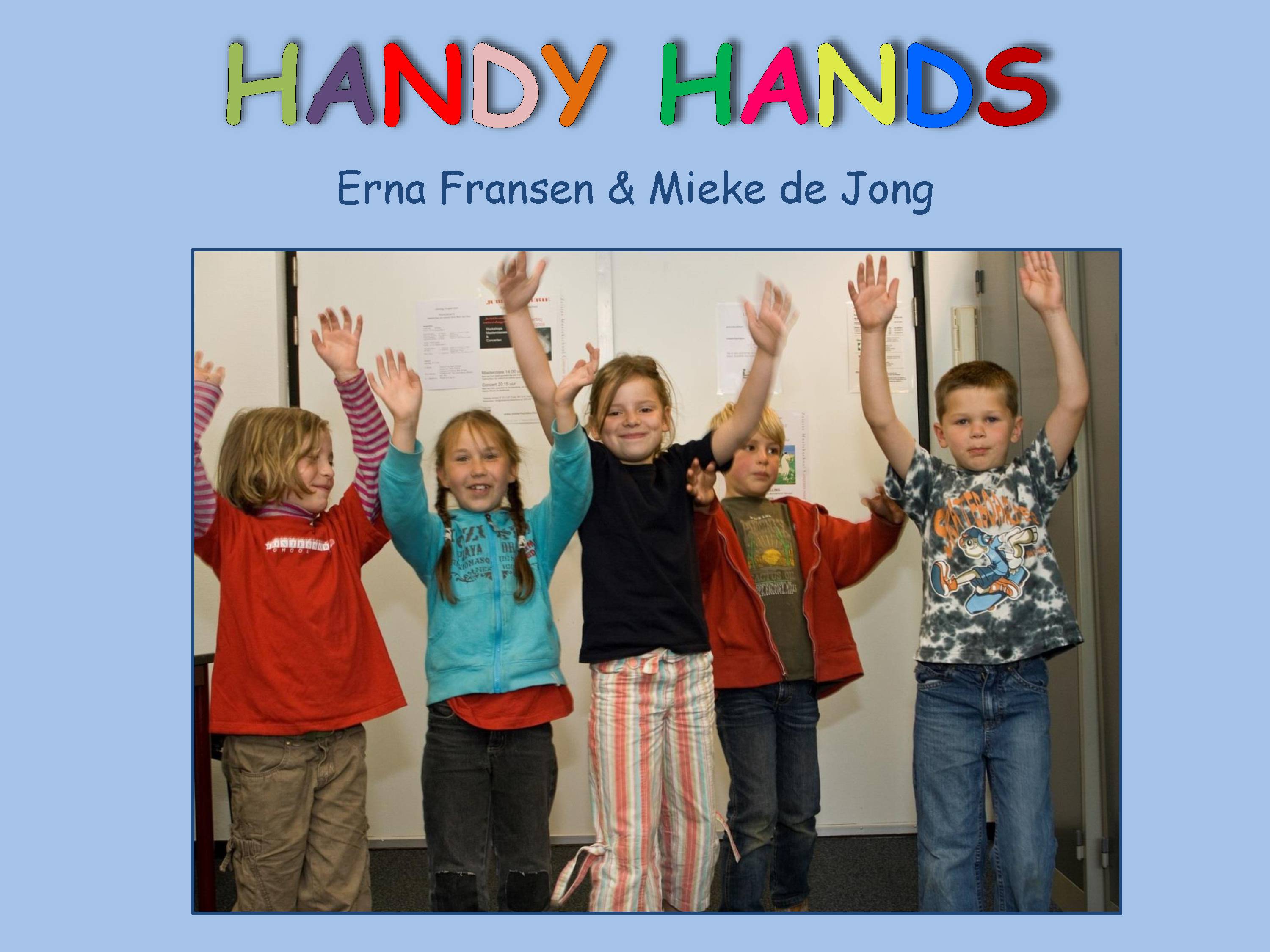
My name is Erna Fransen, this is Mieke de Jong. We both work in Zeist. For twelve years we have been teaching young children from the age of 5, individually and in groups. We work mainly by ear. As you can see, our auditory method is called Handy Hands.
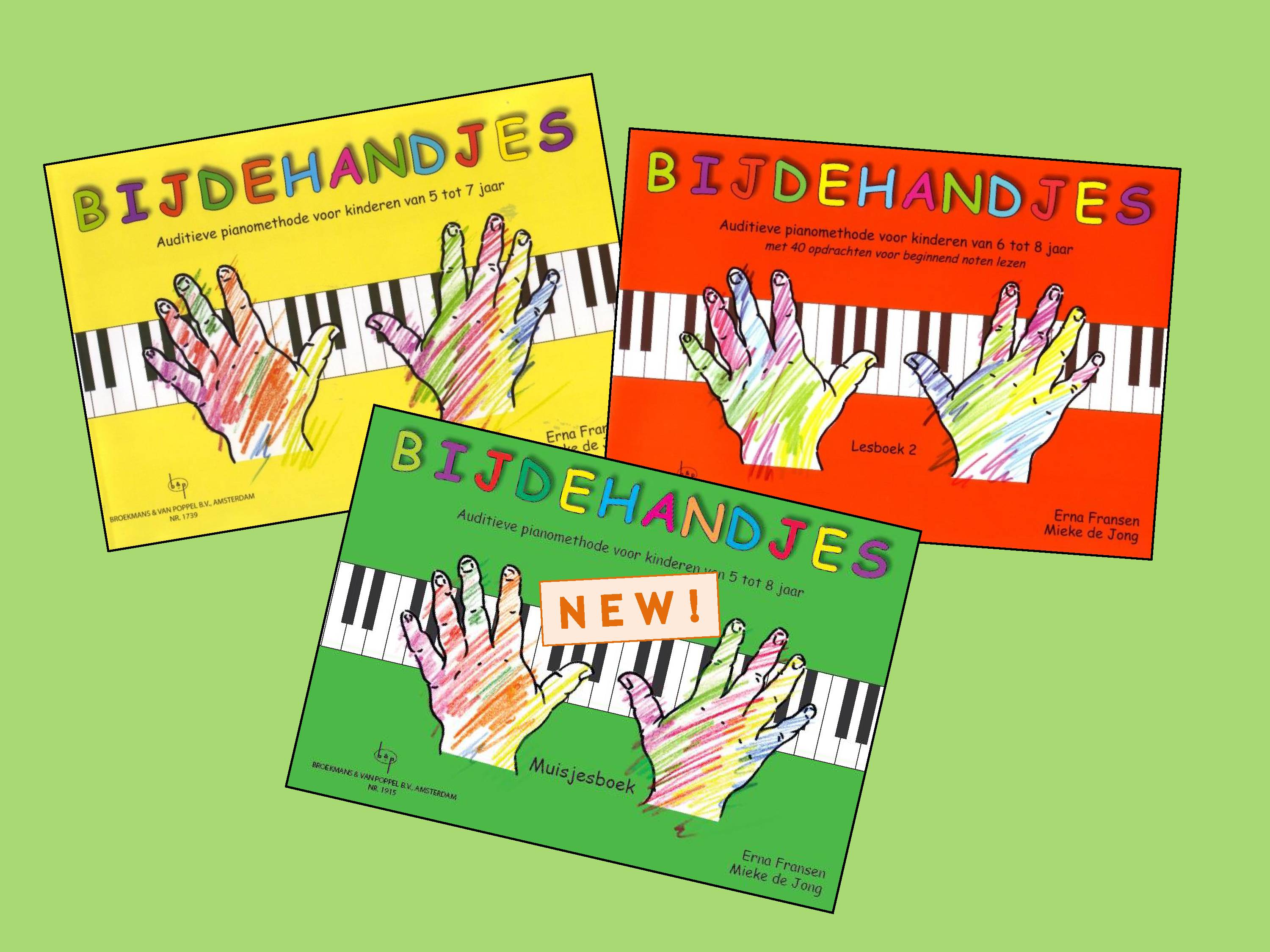
We have written three books. The yellow book is the first one, the orange one is Part 2. The Green Mice book, a book with extra songs and fantasy tasks has been published recently. We give lectures and workshops to piano teachers who intend to use an auditory didactic method with young children.
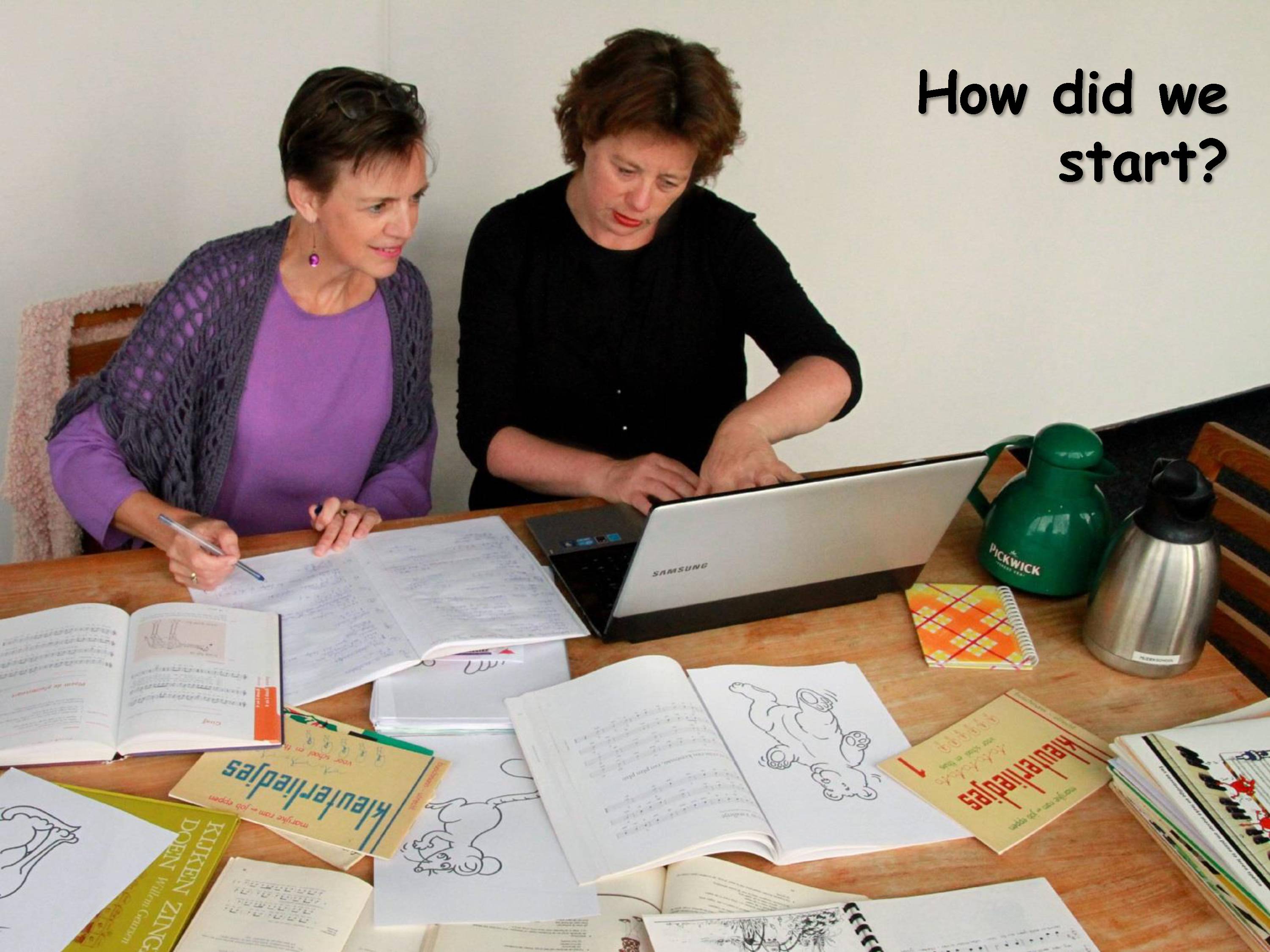
We started to make a survey of what we want to teach to young children and in what order. Then we searched or composed songs, that are suitable to play on the piano. For us rhythm, articulation and the key of the song are important features.
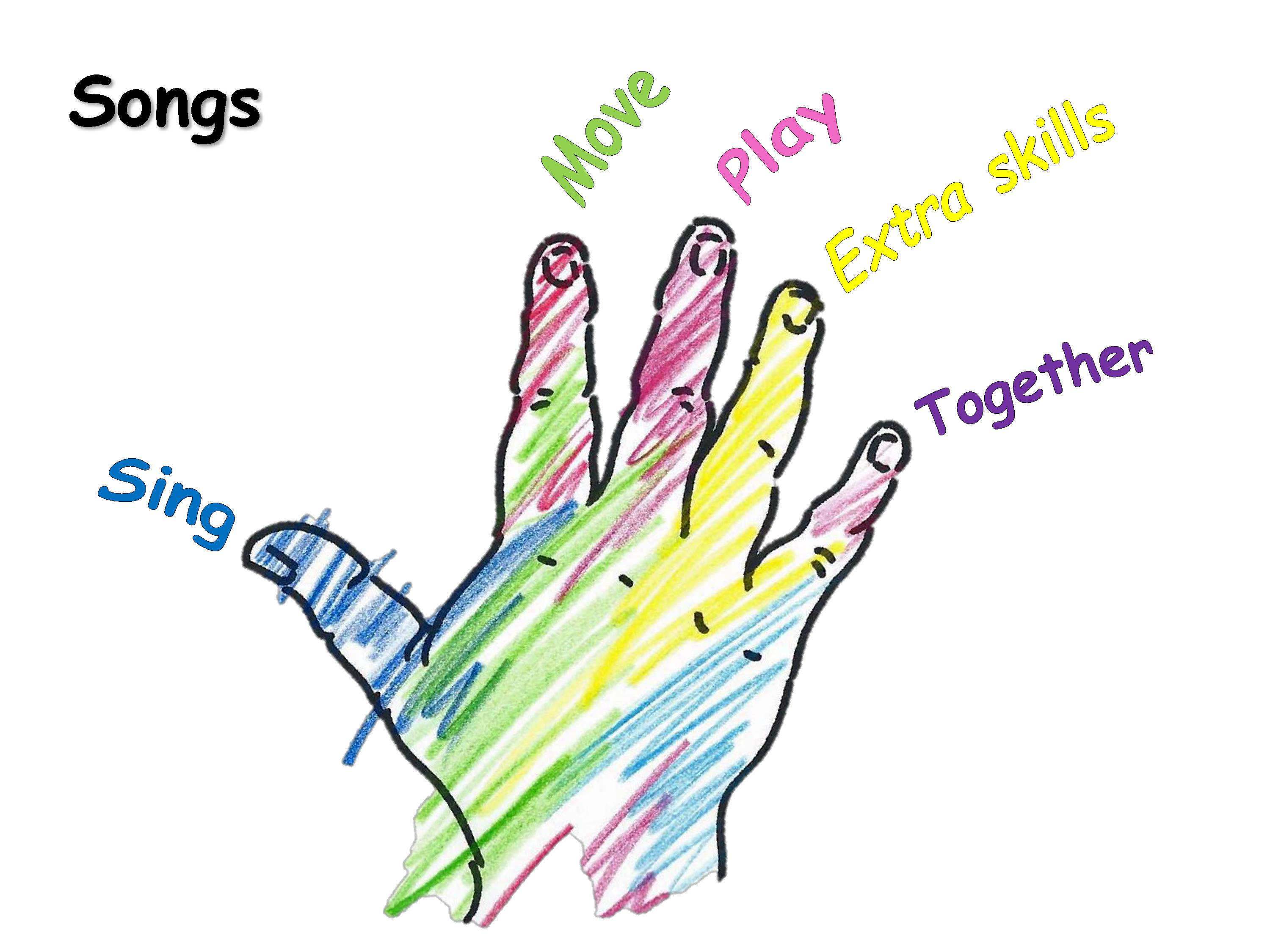
Our method is based on songs. The children sing a song and do movement tasks while singing. Then they play the song on the piano, learn extra skills and play the song together. Our method starts at such an elementary level, that any 5-year old will be able to step in.
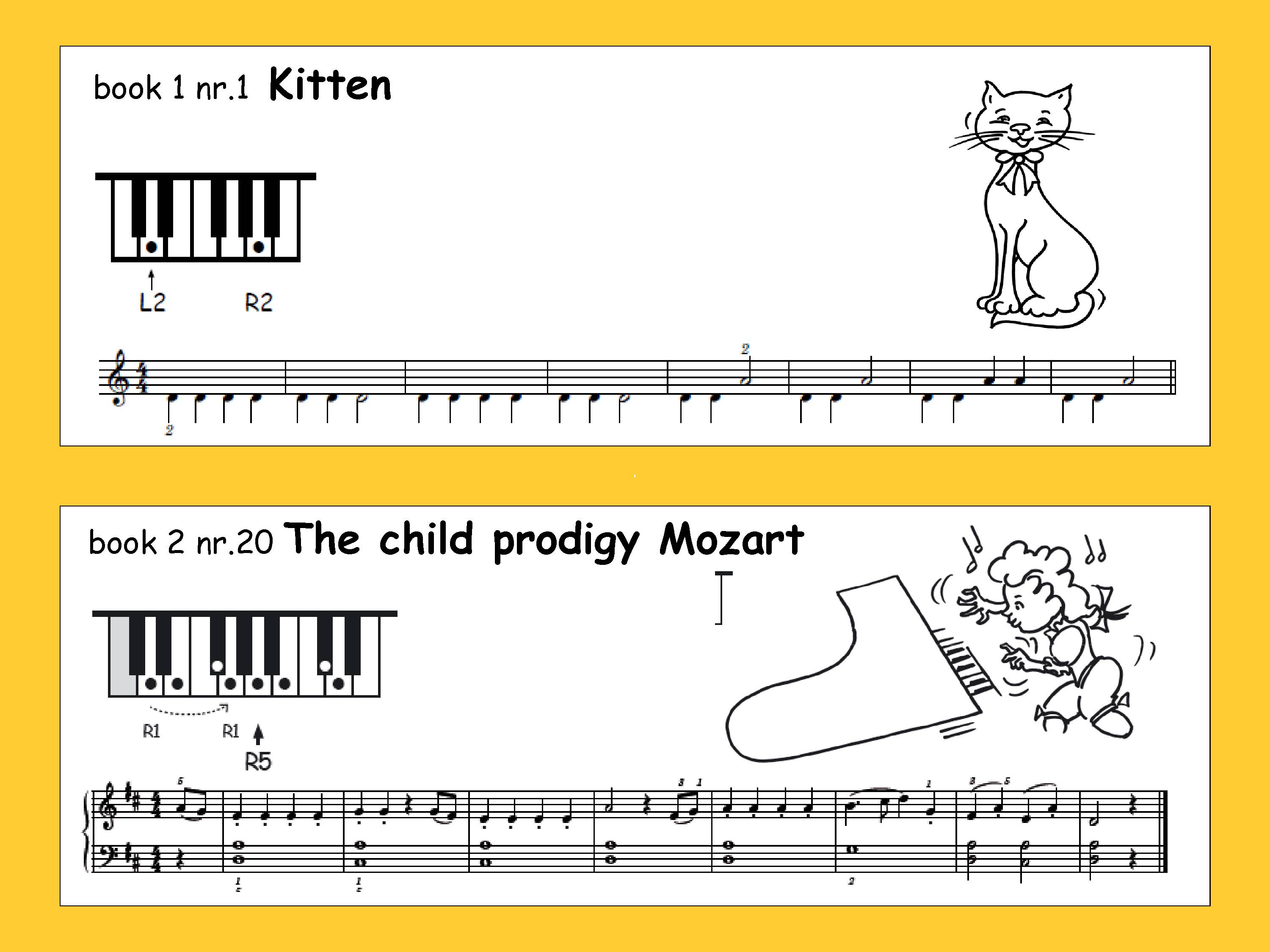
The first book begins with two-tone songs. Step by step they develop into 5-tone songs in four different keys. The second book goes from 5 to 8-tone songs. As you can see we learn the fifth in the first song and end with a pianopiece with two hands about Mozart.
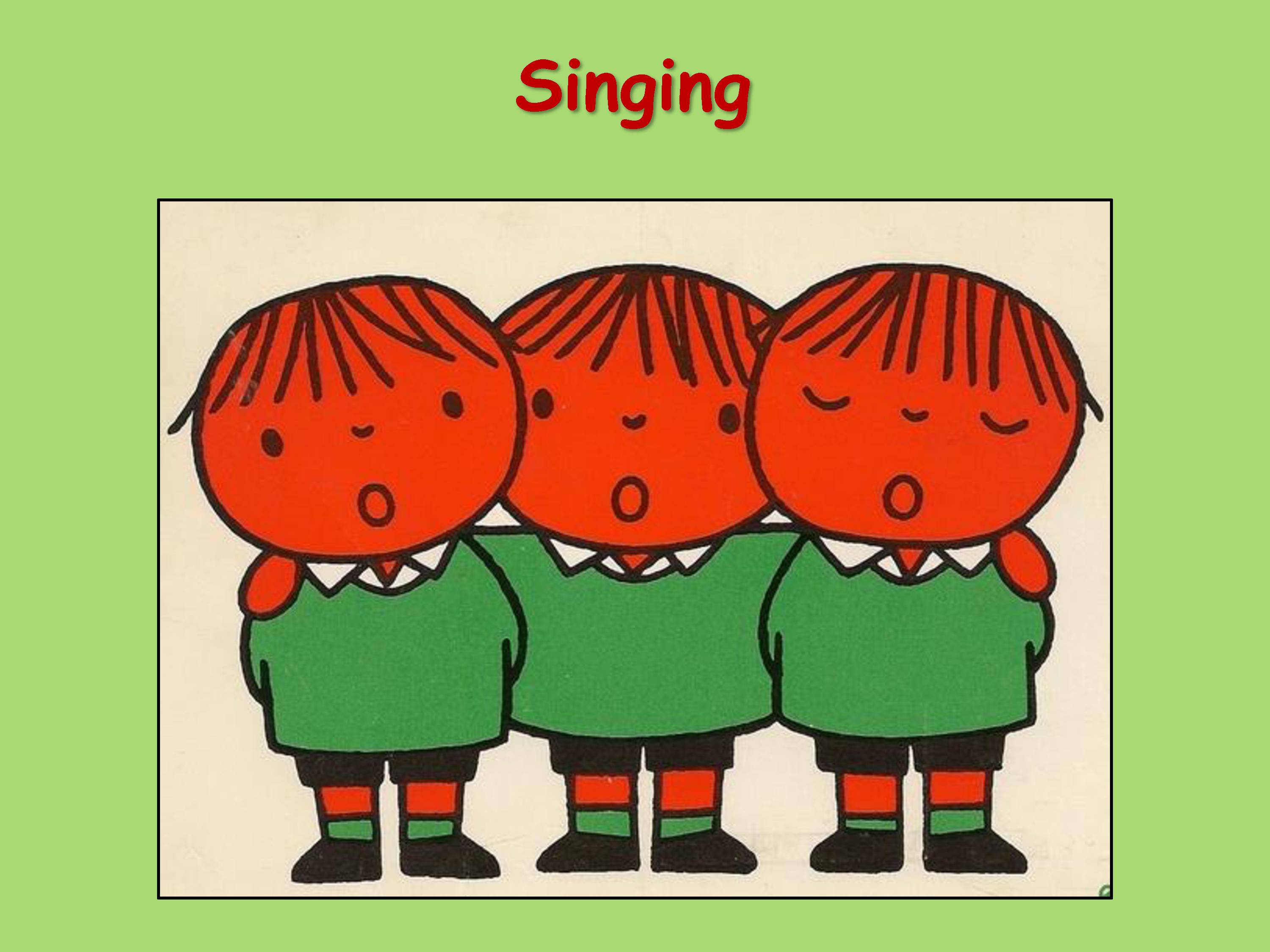
We start every new song by singing it to the children and inviting them to sing along. If children don't want or dare to sing, we watch to see if they are listening well and taking in the lyrics . We know from experience they will sing along spontaneously after a while.
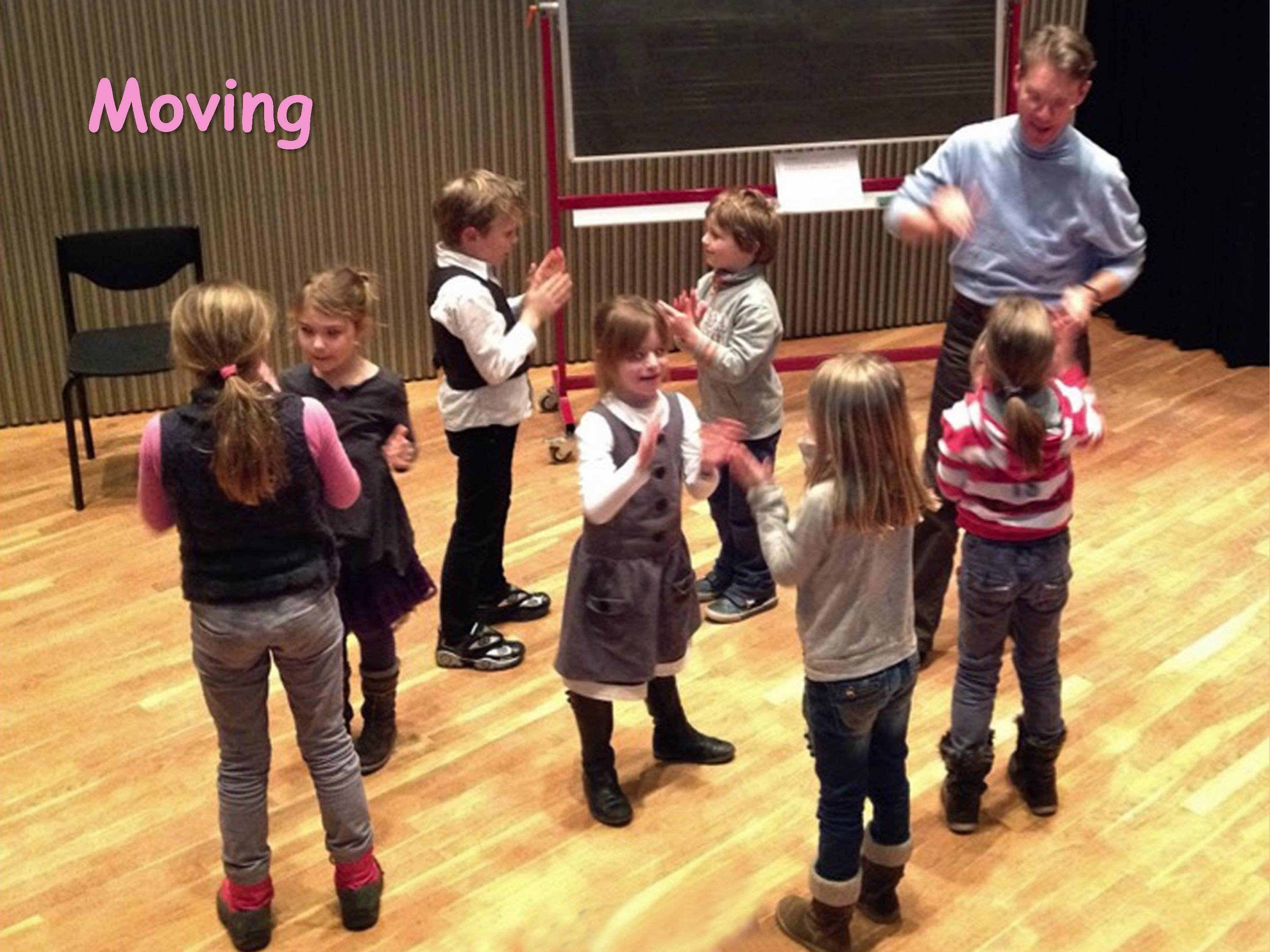
It is easier for 5- and 6-year-olds to memorize a song or a lyric when there is a movement linked to it. Young children like moving! We use movement to develop a bodily understanding of the pitch, the time or the rhythm of a song. Each song is so often repeated that they will get to know the song very well.
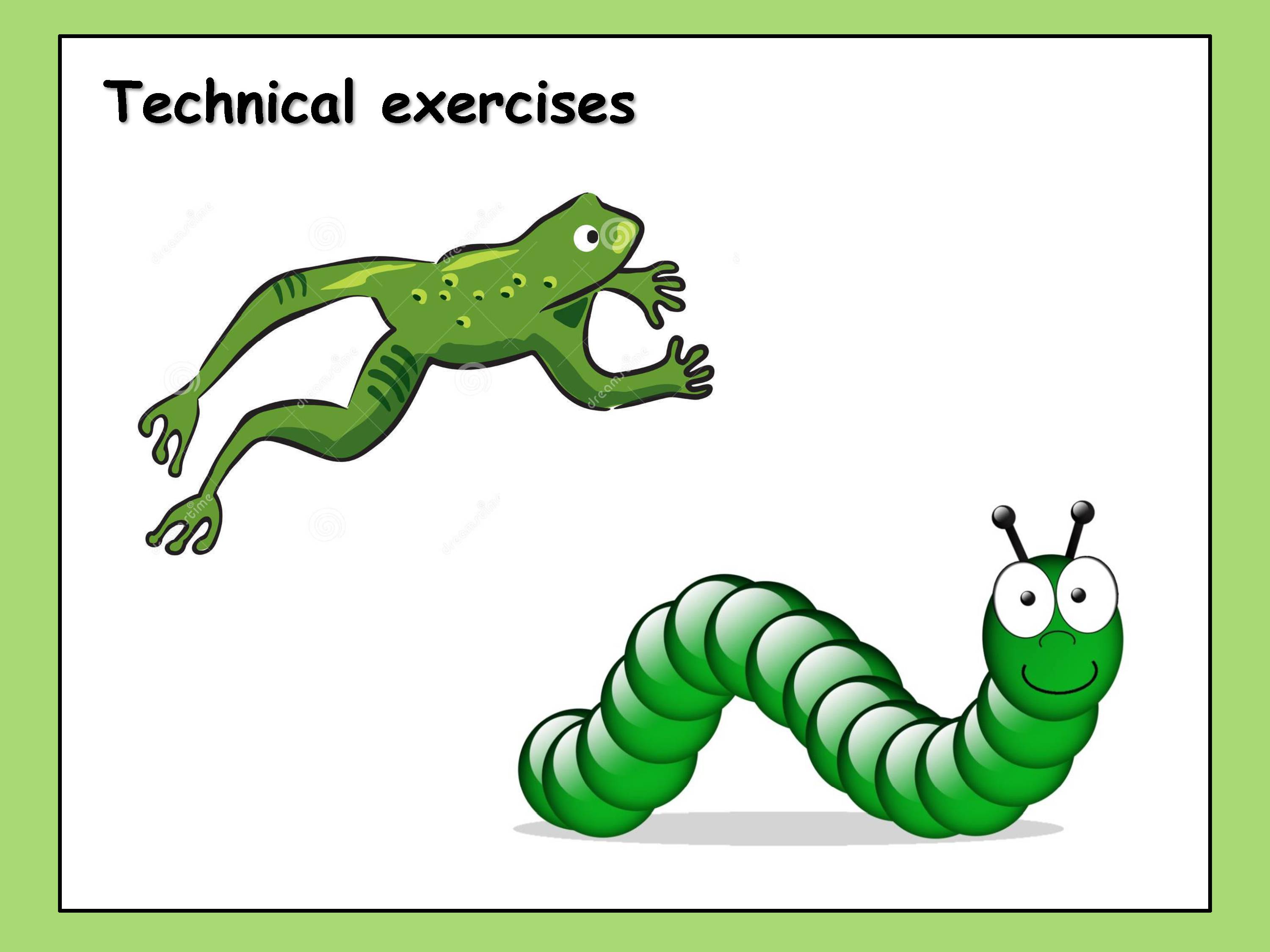
We take all kinds of technical exercises from the songs. These prepare the student for the actual playing of the song. For example the frog hop: playing a part of a song with a loose arm across the piano. Or the caterpillar: simple pattern shifting up the keyboard exercises.
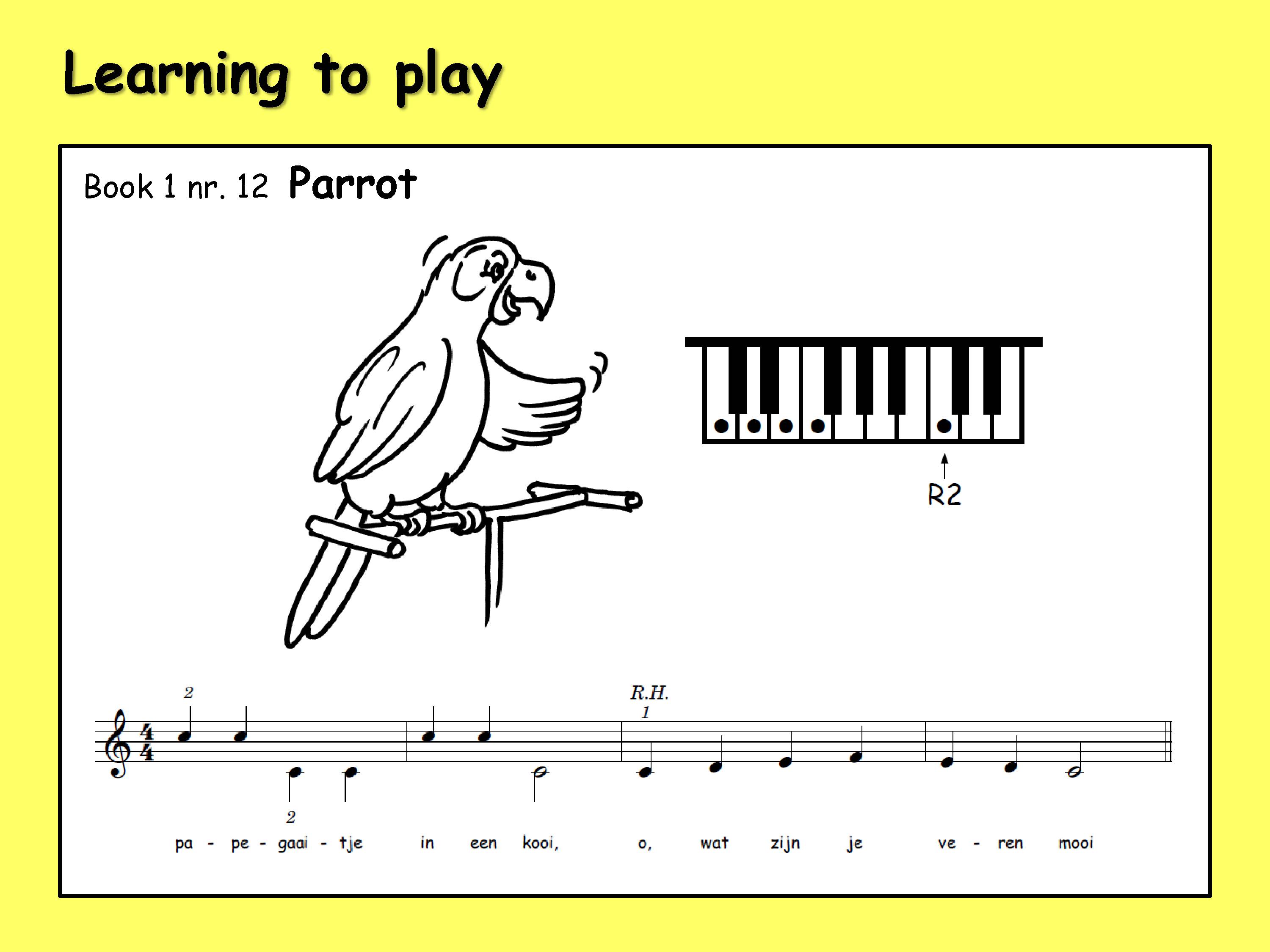
Learning a song starts with practicing the correct position of the hand on the piano. Then we play small pieces of the song that are copied by the child. During this process we keep on singing the song. We have songs for the right hand and for the left hand.
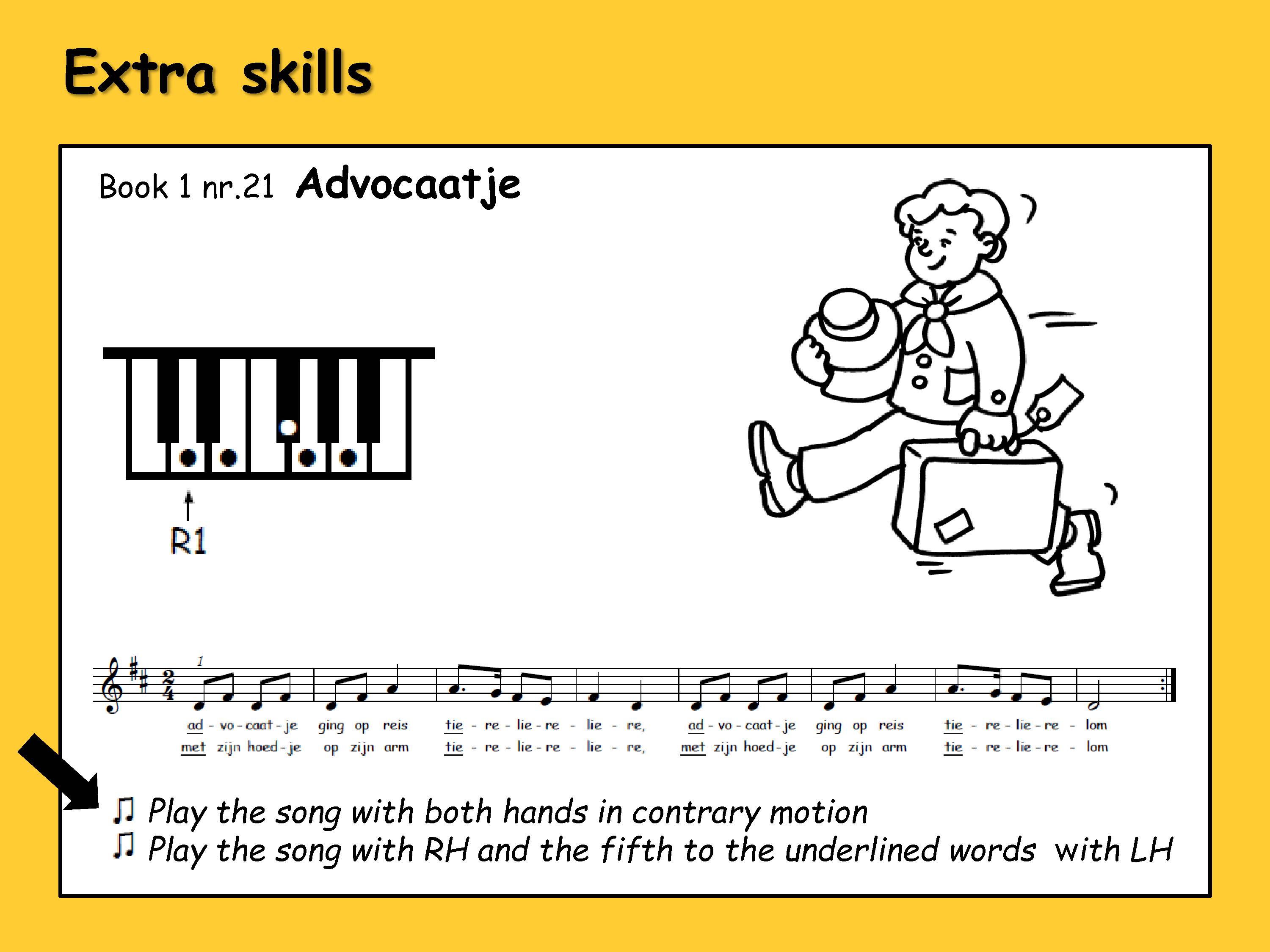
When the child is able to play the song, he will get additional exercises. In this example: play the song with both hands in contrary motion or play the song with RH and the fifth with LH. By giving children extra tasks, we are able to match any level.
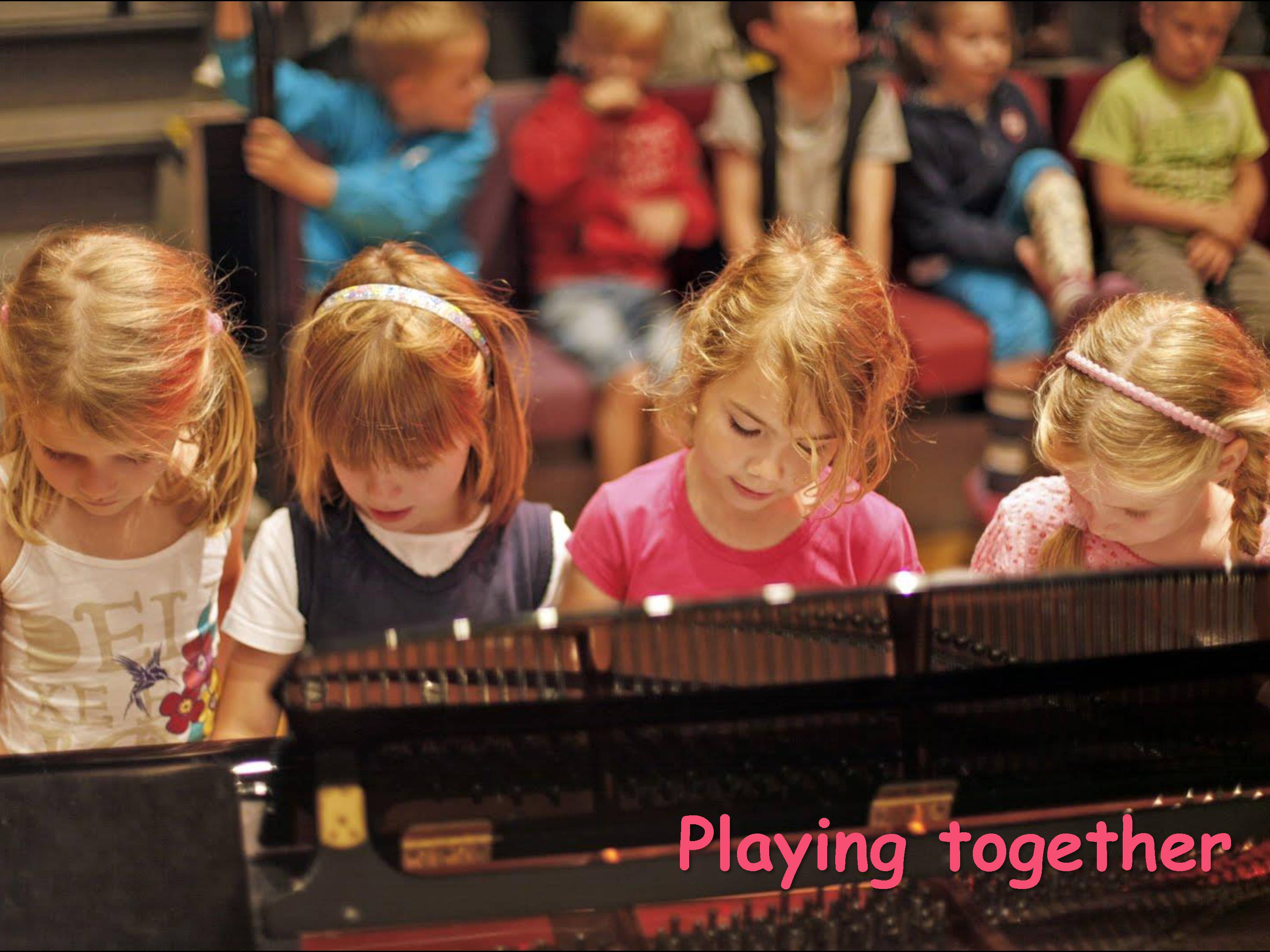
Playing together is an important part of our method, it stimulates the child to listen well and feel the rhythm. The books contain songs in rounds, songs with a piano accompaniment (for teacher or another pupil) and songs with chord symbols. Time to listen to an example.
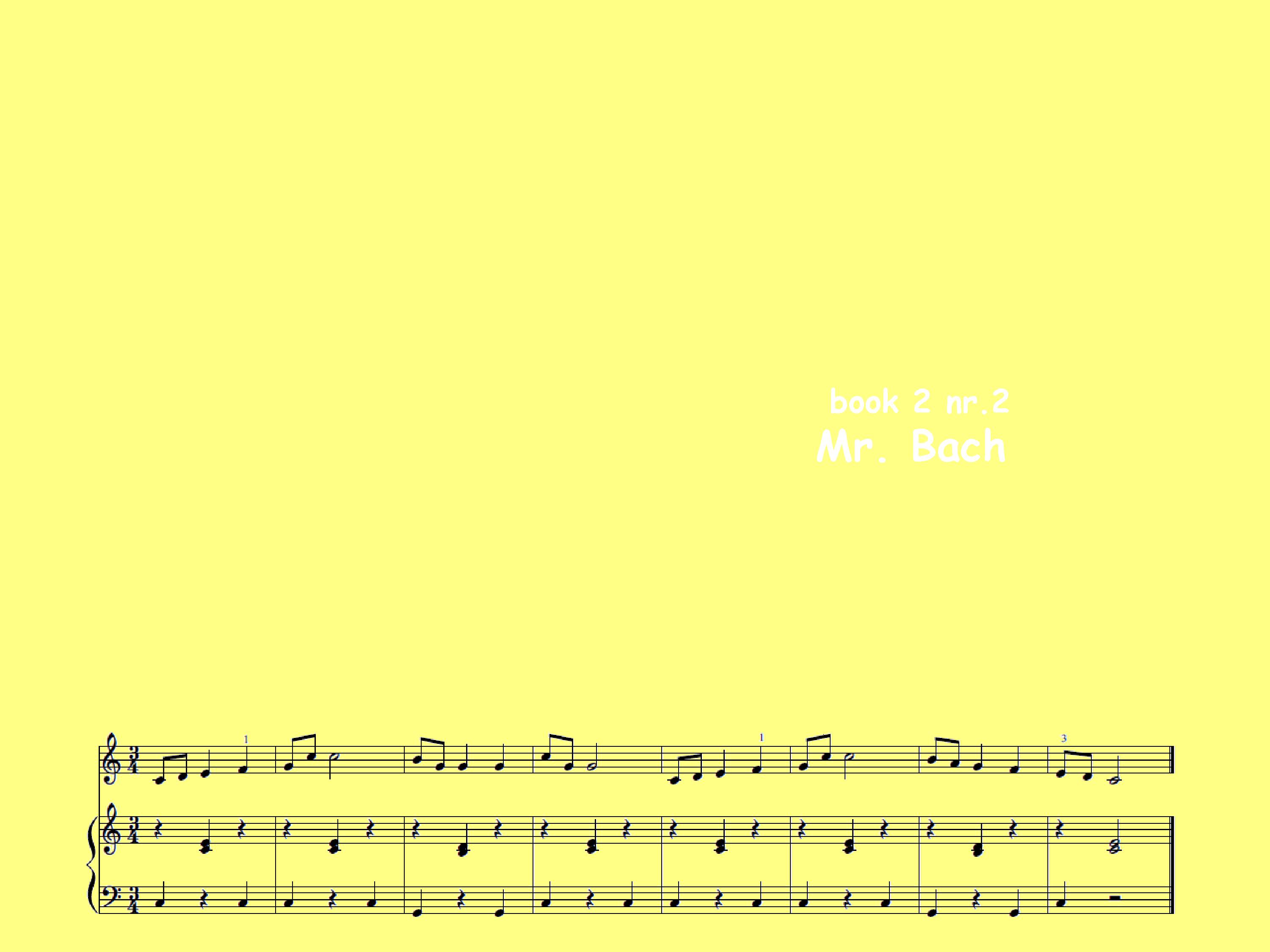
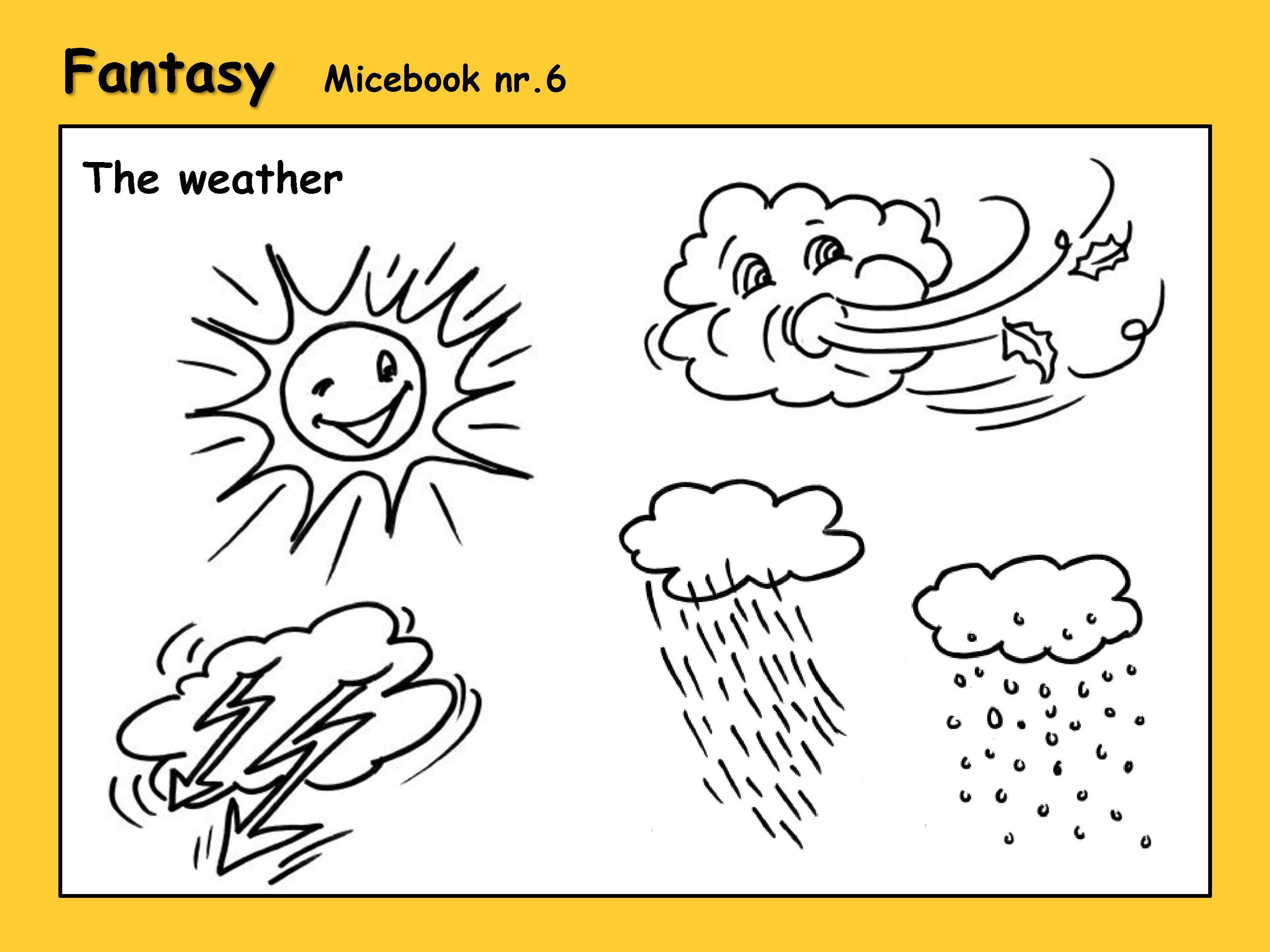
We like to use the child's fantasy, which is always fun. How does a cat run across the keys, how does thunder and lightning sound on a piano? Can you tell a story and add piano music to it? We also ask the children to play a song in a happy, sad or angry way.
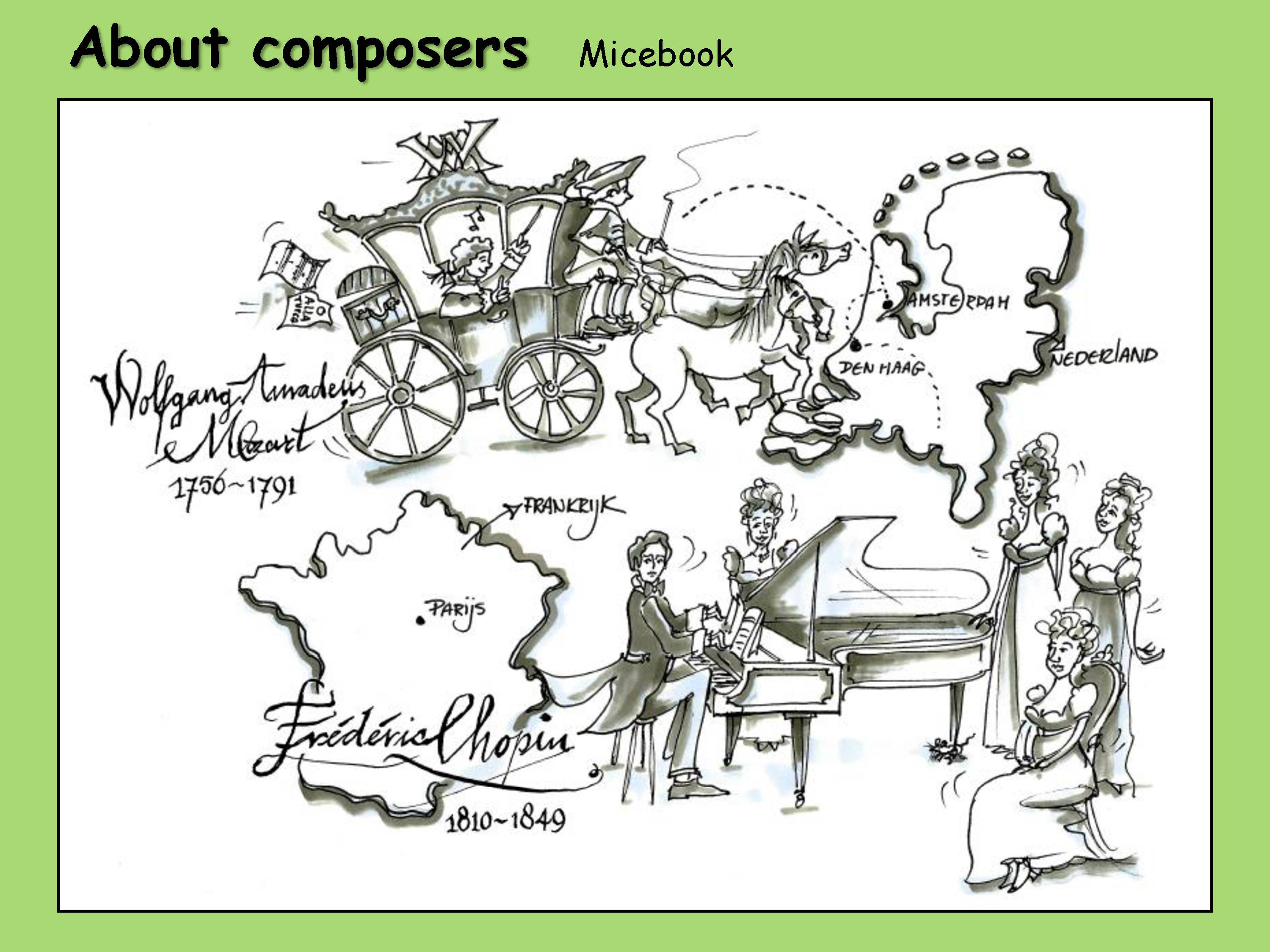
How wonderful and necessary it is to introduce beautiful piano music to the children? We like to play famous piano pieces for them. At another time we tell about composers and the period they have lived in. Look at this beautiful drawing from the Micebook.
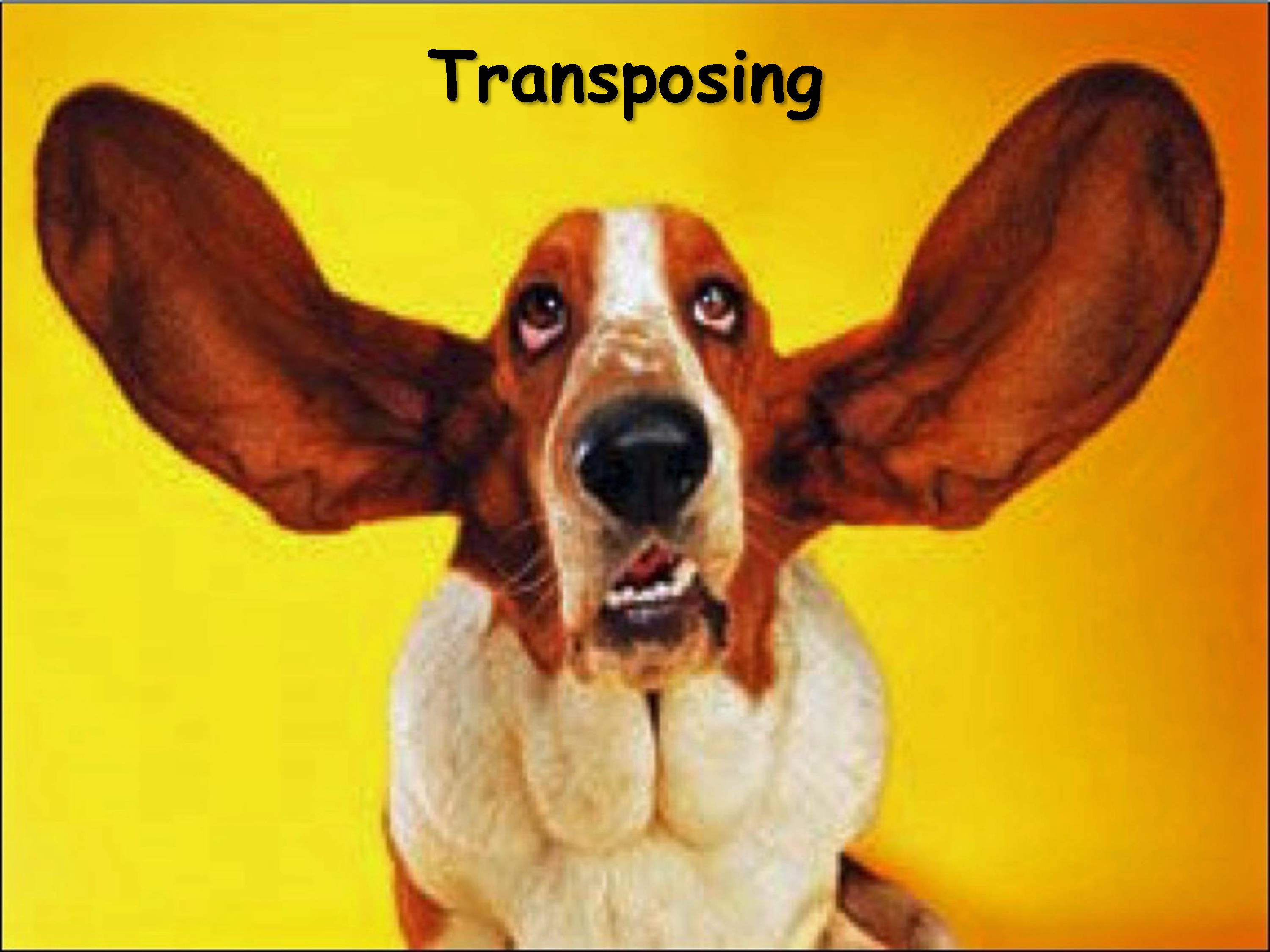
A simple question to the pupil: do you know how to play this song when you start on the d key. In an early stage we already start with transposing the songs by ear. It is easy for the children and an important part of auditory education.
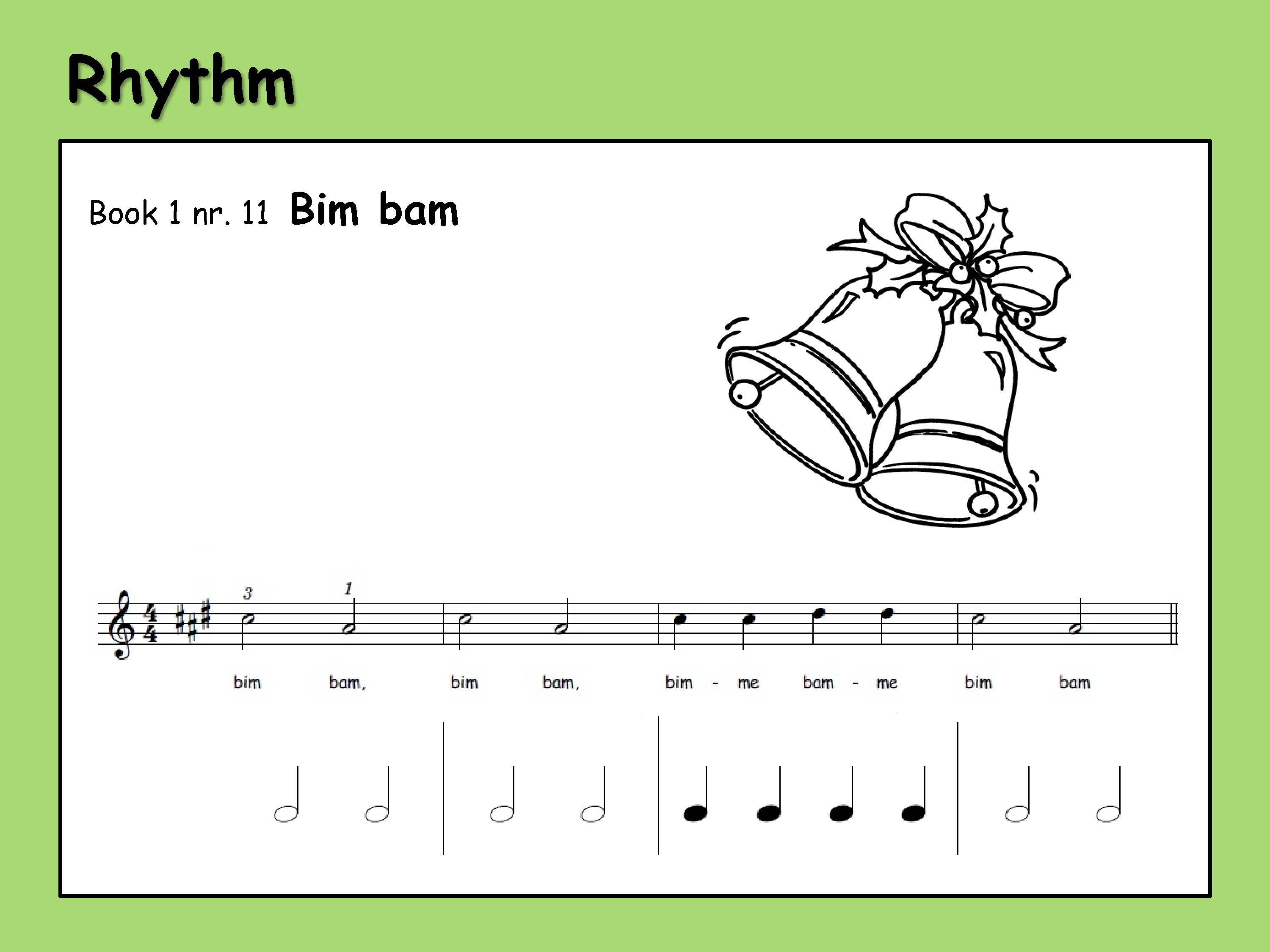
In the first book there are cards with note values on them. With the song Bim Bam we clap the rhythm and show the children the belonging cards. Then a pupil changes the order of the cards and we clap again. This is the start of reading rhythm and playing games with the cards.
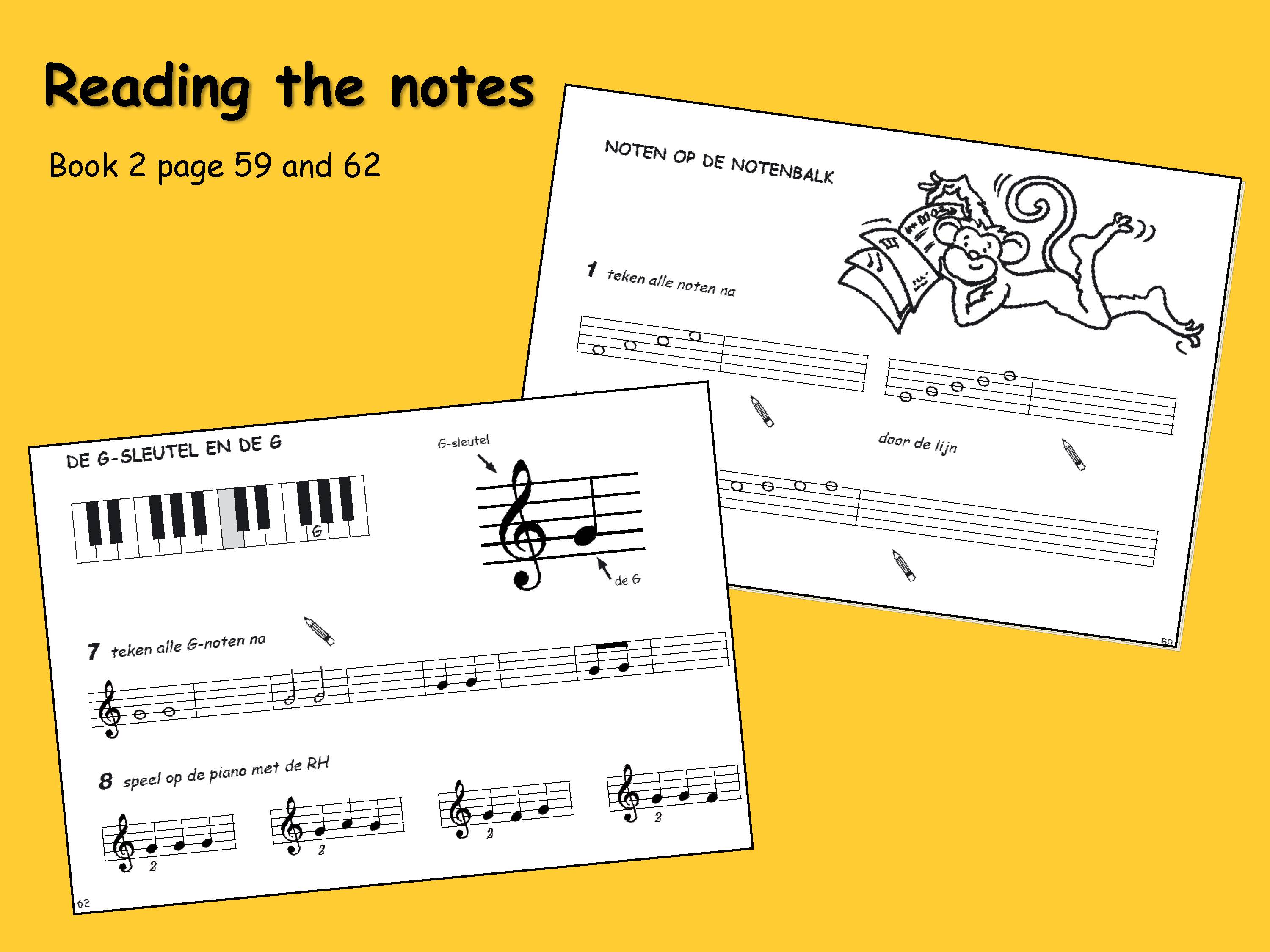
Experience has taught us, that it is better to start learning music notation after at most one year of auditory practice. If you wait any longer, the children are such good auditory learners that they become slow readers. As a preparation for reading notes in the future the children sometimes play without looking at their hands
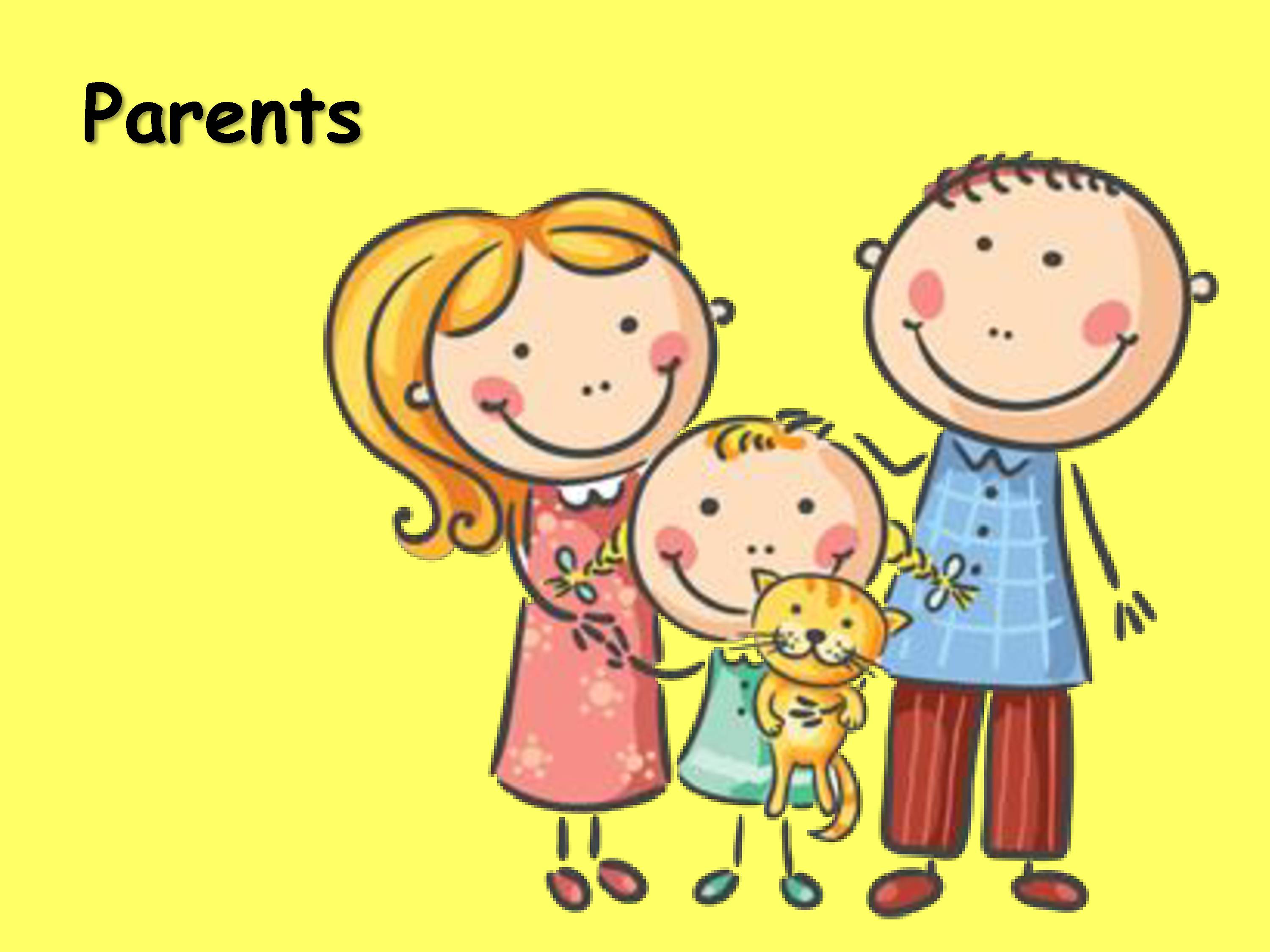
Let's talk about parents: we do need the parents!! They play such an important role in their young child's process of learning to play the piano. They should continue our work at home, so they have to play well enough themselves. Before we start the piano lessons, we explain what we expect from them.
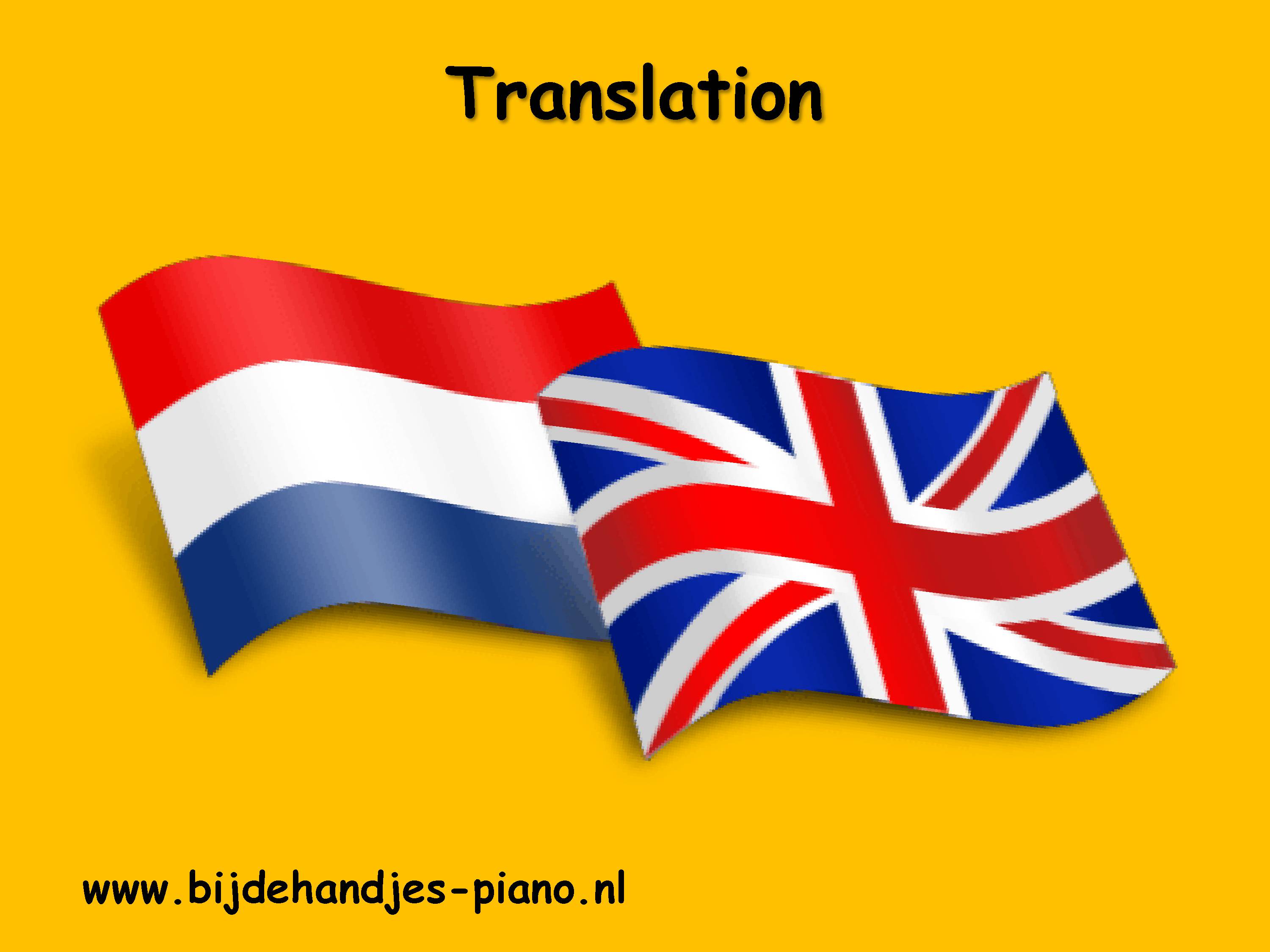
Tiny little problem: our books and songs are in Dutch! We are translating the songs and part of the instructions into English. If you are interested, we'll be here all afternoon, so please come to see us. The translation will also be on our website.
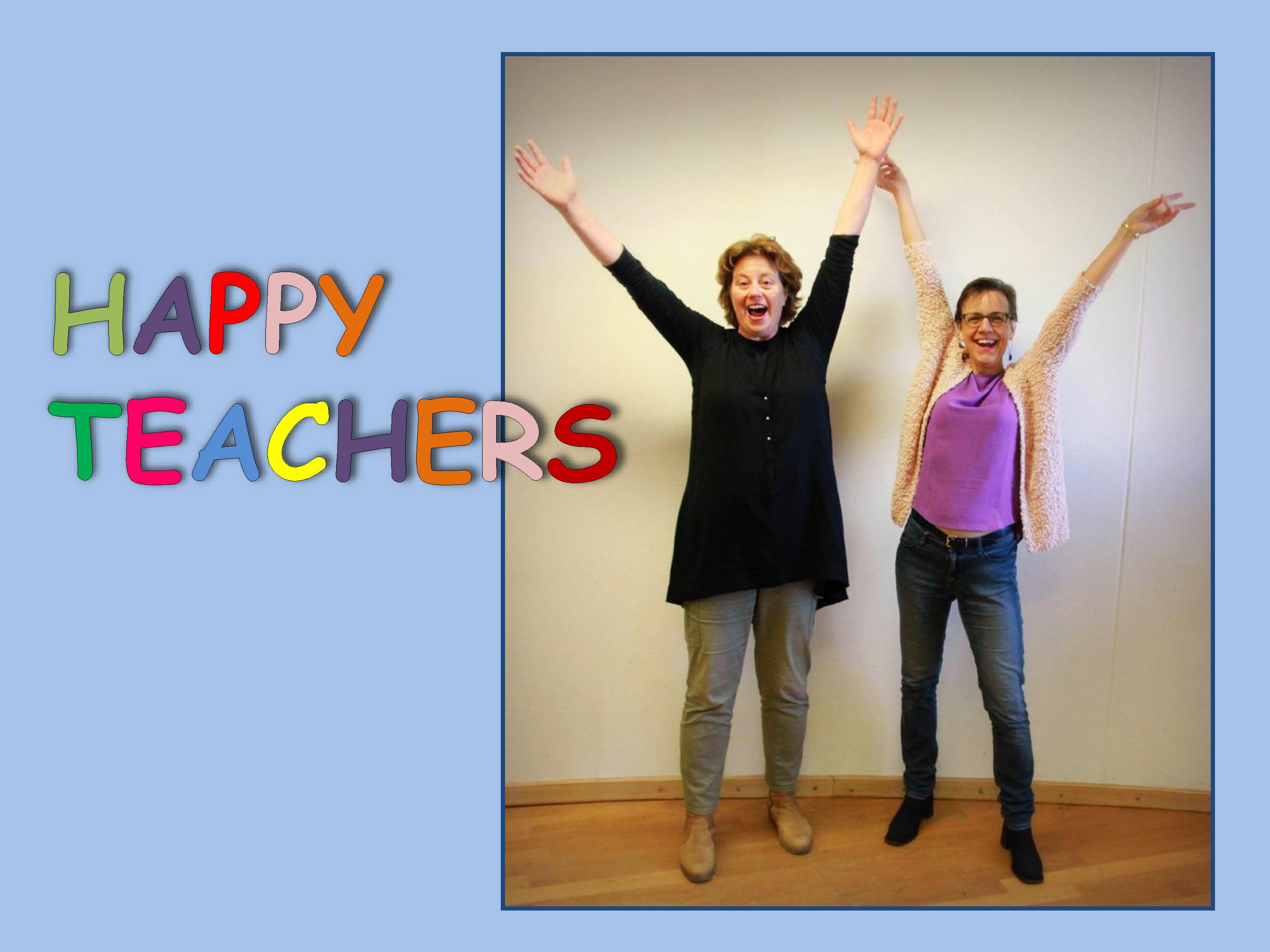
Learning by ear is suitable for every child. Young children are really enthusiastic and proud of what they have learned. They like to play their songs often and we are always surprised about their abilities. After 12 years we are still very happy teachers! Thank you for listening.
We have translated some pages of the books. If you would like to have more information, please contact us.
